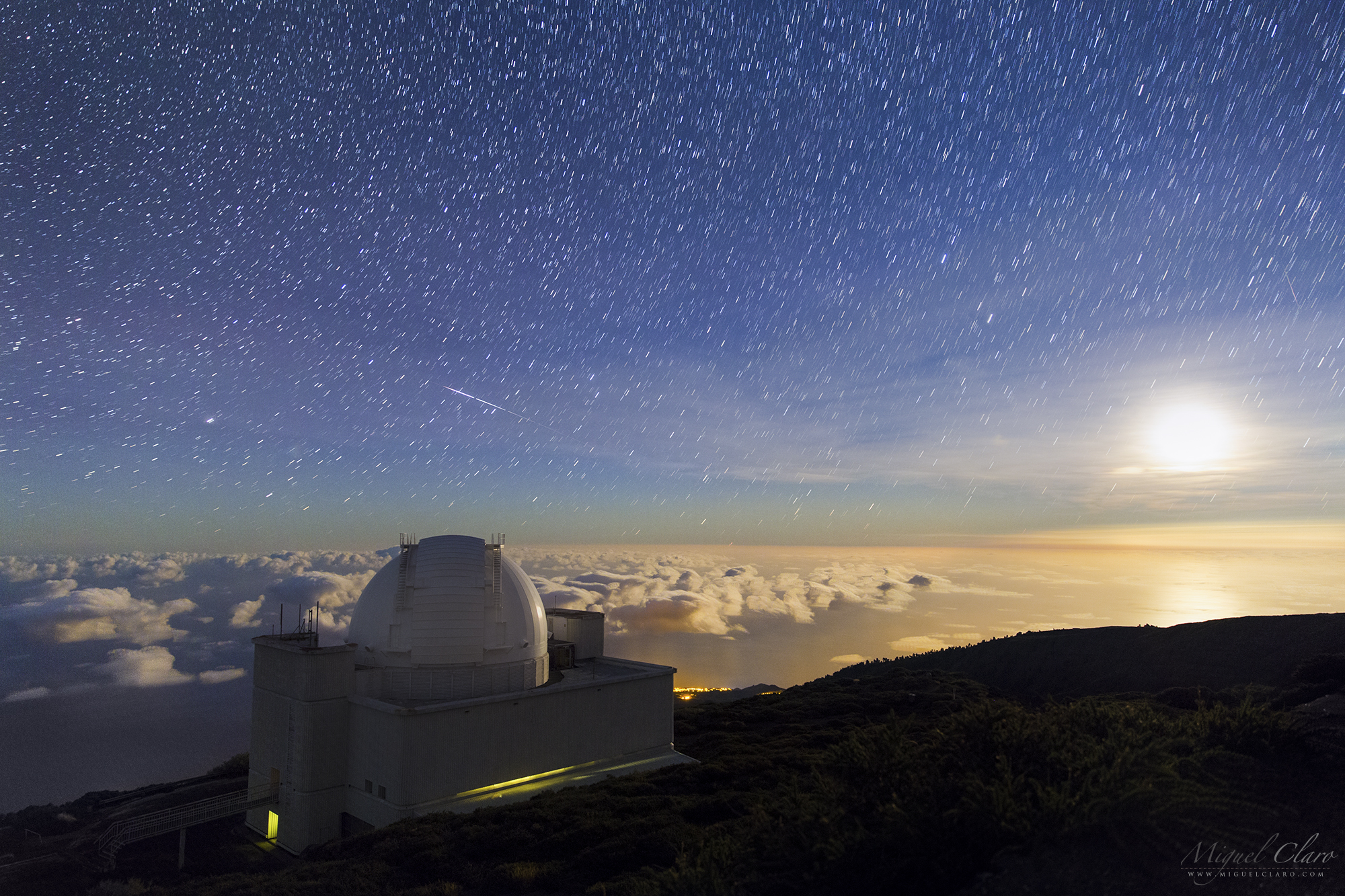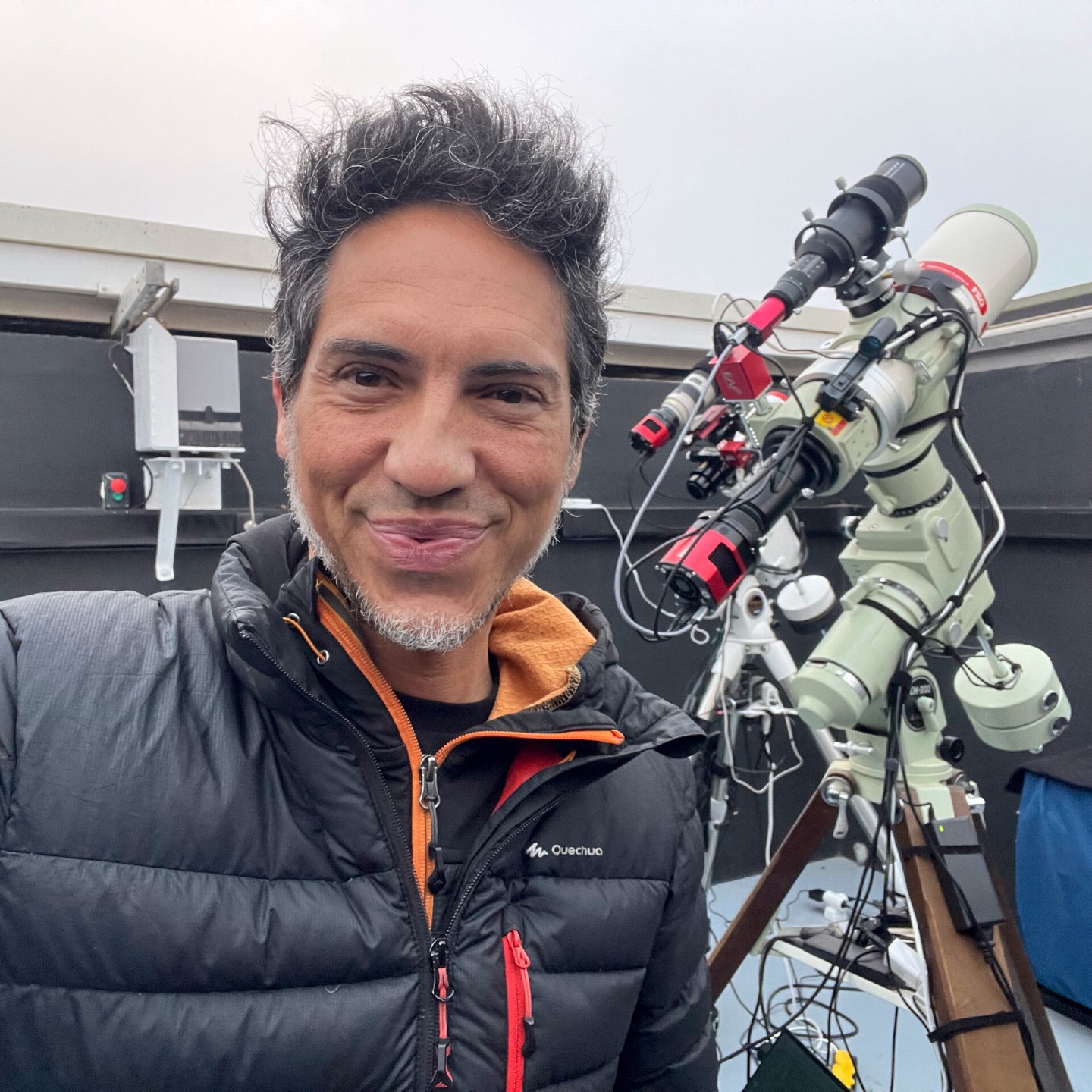Iridium Flare Gleams Above the Isaac Newton Telescope on Its 50th Anniversary

Miguel Claro is a Lisbon, Portugal-based professional photographer, author and science communicator who creates spectacular images of the night sky. As a European Southern Observatory photo ambassador, a member of The World At Night and the official astrophotographer of the Dark Sky Alqueva Reserve, he specializes in astronomical "Skyscapes" that connect Earth and the night sky. Join him here as he takes us through his photograph "Moonlight Iridium Flare Above the Isaac Newton Telescope."
A starry scene captured from the Roque de Los Muchachos Observatory on La Palma, one of Spain's Canary Islands, shows an Iridium flare gleaming in the sky above the dome of the Isaac Newton Telescope on the 50th anniversary of its inauguration. Situated on the rim of a volcano, the observatory overlooks a blanket of fluffy cloud tops illuminated by the glow of the rising moon.
Iridium flares are glints of light that appear briefly in the sky when sunlight reflects off any of the 66 Iridium Communications satellites currently orbiting 485 miles (780 kilometers) above Earth. These flares last anywhere from 5 to 20 seconds and can appear almost 20 times brighter than Venus, the brightest planet in the night sky. [The Brightest Planets in December's Night Sky: How to See Them (and When)]
In this long-exposure shot of an Iridium flare seen from the Isaac Newton Telescope (INT), the satellite resembles a "shooting star" as it passes in front of a backdrop of short star trails.
The INT was originally constructed in the 1960s at Herstmonceux Estate in East Sussex, United Kingdom, which became the new site of the Royal Greenwich Observatory as light pollution in Greenwich drove astronomers to relocate to darker skies. The 100-inch (2.5 meters) telescope achieved first light in 1965 and was inaugurated by Queen Elizabeth II on Dec. 1, 1967.
But after just a few years of observations, officials at the Royal Greenwich Observatory decided that the telescope would be more useful somewhere with better weather conditions.
After visiting the Roque de Los Muchachos Observatory in La Palma, where the Cumbre Vieja volcano rises above the cloud tops, they decided to move the telescope to the rim of that volcano. The telescope resumed operations at the new location in 1984.
Breaking space news, the latest updates on rocket launches, skywatching events and more!
Over the years, the INT has made many important contributions to astrophysics research, including the first-ever discovery of a black hole. The telescope has also observed quasars (extremely bright galactic nuclei), exploding stars known as supernovas, galaxies, nebulas and more.
To see more of Claro's amazing astrophotography, visit his website, miguelclaro.com.
Follow us @Spacedotcom, Facebook and Google+. Original article on Space.com.
Join our Space Forums to keep talking space on the latest missions, night sky and more! And if you have a news tip, correction or comment, let us know at: community@space.com.
Miguel Claro is a professional photographer, author and science communicator based in Lisbon, Portugal, who creates spectacular images of the night sky. As a European Southern Observatory photo ambassador, a member of The World At Night and the official astrophotographer of the Dark Sky Alqueva Reserve, he specializes in astronomical skyscapes that connect Earth and the night sky.

